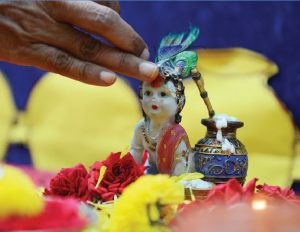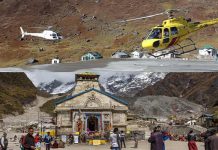 Out of this vast, nay an infinite, storehouse of wisdom, now documented, codified and recorded for posterity, many doctrines, concepts and their explanations in a myriad ways by holy men from diverse schools of thought, one paradox popularly referred to as MAYA, has been discussed, elaborated, philosophised in stranger-than-fiction ways by different so-called Dharam Gurus.
Out of this vast, nay an infinite, storehouse of wisdom, now documented, codified and recorded for posterity, many doctrines, concepts and their explanations in a myriad ways by holy men from diverse schools of thought, one paradox popularly referred to as MAYA, has been discussed, elaborated, philosophised in stranger-than-fiction ways by different so-called Dharam Gurus.
The most popular and very widely recited story to explain the riddle of what Maya is, relates to the Sage Narad (the Celestial Ever-roving Narayan Bhagat, who is described as both wise and mischievous in some humorous tales, but generally is depicted as a pure elevated soul glorifying Lord Vishnu through his devotional bhajans extolling Shri Narayan).
This fascinating story relates to what Yogeshwar Shri Krishna playfully did with the Sage, in answer to his query about what is Maya.
Devarshi Narada, being an ever inquisitive and always-on-move Celestial Bard, once asked Yogeshwar Shri Krishna, “Lord I have heard much about your Maya, but have never seen it. Kindly show me Maya.”
Lord Krishna thereupon asked Sage Narada to make a trip with him towards a desert, and after walking for several miles, Lord Krishna told the Sage to bring some water for Him to quench the Lord’s thirst. Sage Narada went to a nearby village and knocked at a door, which was opened by a beautiful young woman. At the sight of her, Narada, forgot that his Master was waiting in the desert for water.
He forgot everything as he talked to the woman. They talked all day and night and returned the next day to ask the damsel’s father for her hand.
The Sage and the damsel got married and had children. After the death of his father-in-law he inherited all his property and lived a very prosperous life. Twelve years passed in this manner.
One day a great storm came from the West, which caused the river banks to overflow and flood the village.
In desperation, Sage Narada took hold of his three children and wife and tried to escape the highly turbulent waters.
But one by one he lost his hold on his children and finally his wife. He swam to the river bank where he fell down and cried in despair for all that he had lost. From behind him, came a gentle voice: “My child where is the water? You had gone to fetch water for me, and I have been waiting for you for a half an hour.” Sage Narada couldn’t believe that the memories of the past twelve years that filled his mind happened in barely half an hour.
Lord Krishna smiled and said, “All this is Maya. All human beings spend their lives like this, but very few have the experience that you now have. Now you must never forget as to what is Maya.”
If while just going to next village nearby, if a learned Sage like Devarshi Narad could forget his lifelong devotion to the Lord of the Universe and fall into a deep sleep while dreaming of another life, then any lesser mortal can easily fall prey to the mundane pleasures and create fantasies of all kinds in no time. Through this metaphor, Lord Krishna does not awaken us from our dreams, but exhorts we mortals to let go our daydreams.
Learned as he was, Devarshi Narad must have read books on the idea of maya, and he may have even heard great masters give talks on it, but he still continued to dream because he was holding on tight to his illusions.
He needed to let go and make contact with the part of himself that could experience the way things are. Krishna knew what was needed.
He understood that Narada had to be put under conditions that would help activate the force of attention. So instead of offering Narada teaching about Maya, he sent him off to experience it for himself.
Another mystical instance is again connected with Yogeshwar Shri Krishna when, as per popular belief, He is believed to have revealed all the eighteen chapters of the Holy Book of Geeta. Needless to say that all this Divine Knowledge comprised in 700 Shlokas, which for a very learned person would make at least a few hours reading alone, not to talk of listening, imbibing and then acting upon the Divine Message.
When the dust and din of battle ready armies of both the warring sides riding elephants, horses, equipped with all types of weapons and foot soldiers ready to charge after the war bugles and conches had been blown to a crescendo, in this situation how could a fledgling, indecisive and fearful inquisitive warrior listen to all this long narration of Divine Knowledge. Insofar as the story goes, the Lord Himself showed His “Virat Roop” to Arjuna, the warrior, which made him realize his duty or say his “Swadharma”.
If anyone who has heard or read the story of Sage Narad with full Devotion, it is not difficult to understand that the entire Divine Knowledge was conveyed by the Lord Himself and imbibed by the seeker Arjuna instantaneously going by our familiar time scale.
This is again is a very fascinating, yet familiar, esoteric example of MAYA — the eternal paradox of Sanatan Hindu Philosophy. Delving deep into the concept of Maya does not stop here.
In the next write up we deal with the scientific angle of understanding Maya.
letters@tehelka.com













